Explore the enchanting rituals of Gujarati weddings, where vibrant traditions paint every ceremony with joy and unite families in a spectacular celebration of culture and communal harmony.
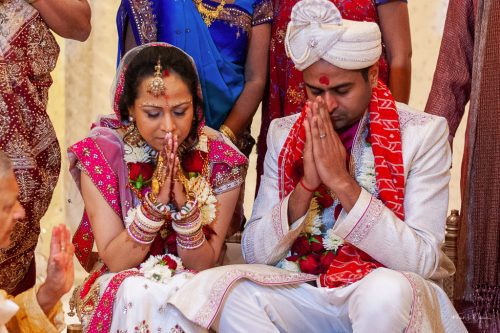
Grand Indian weddings are a dreamlike spectacle. Each region’s distinct traditions add to its unique charm, and India’s vast cultural diversity makes them truly remarkable. In Gujarat, a region celebrated for its vibrant colours, rich cuisine, and lively culture, weddings are conducted with great pomp and show.
Overflowing with fun and happiness, the festive spirit of the Gujarati people shines brightly in their wedding customs and celebrations. As the festivities commence, the air fills with the melodious tunes of traditional folk music, setting the stage for a celebration that is both grand and intimate.
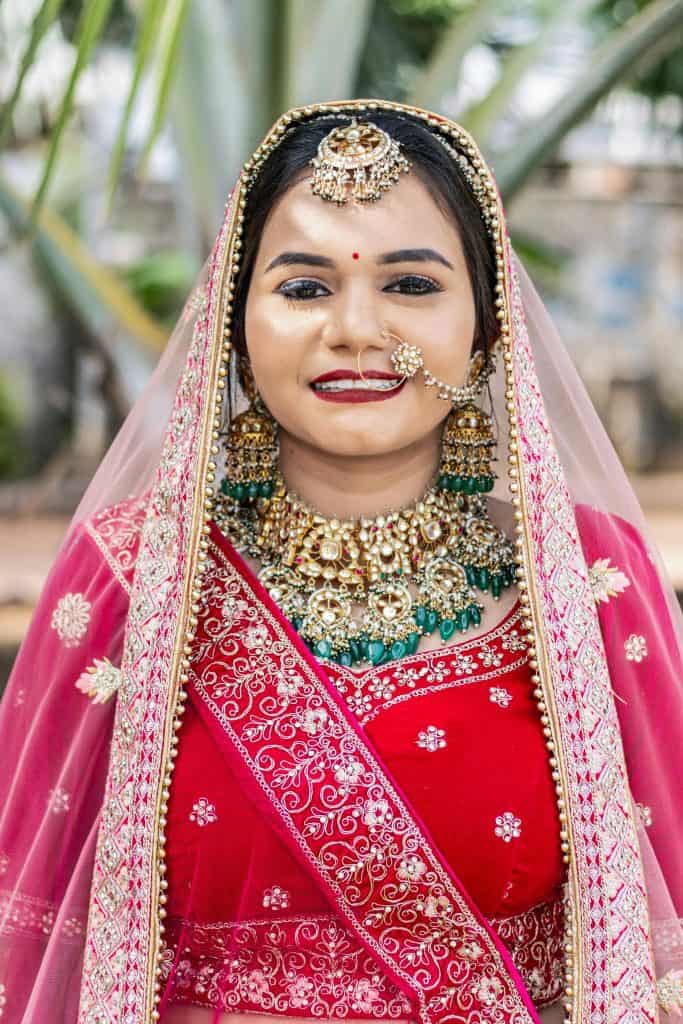
The joyous laughter of relatives mingling in stunning outfits creates a kaleidoscope of brilliant hues, from the radiant reds to the gleaming golds. These weddings are not just ceremonies but a splendid fusion of rituals and revelry.
From the enchanting “Garba” dance that lights up the night to the poignant “Vidai,” each moment is steeped in meaning and merry-making. The aroma of delectable Gujarati dishes wafts through the air, promising a feast as lavish as the visual spectacle.
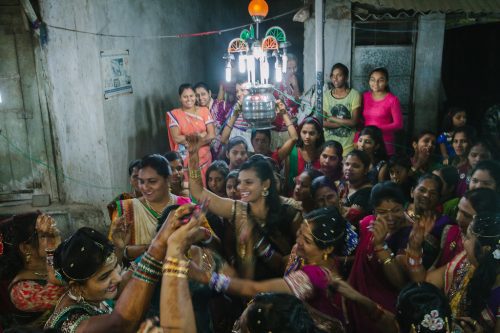
Amidst this whirlwind of activities, the couple, adorned in exquisite attire, exchanges garlands under a beautifully decorated mandap, symbolizing an unbreakable bond. Each Gujarati wedding is a unique celebration of life and love, offering an unforgettable experience that dazzles the senses and leaves a lasting impression on every heart. Engaging in this exuberant celebration, one can truly feel the essence of Gujarat’s rich cultural heritage and the warm hospitality of its people.
Here is a guide to Gujarati wedding traditions:
Pre-Wedding Rituals:
The pre-wedding traditions and rituals of a Gujarati wedding are an exciting start to the grand festivities that follow, offering a glimpse into the cultural depth of Gujarat and a chance for both families to come together and celebrate.
Here are the pre-wedding rituals that herald the start of the festivities and celebrations.
Chandlo Matli: The Chandlo Maatli marks the beginning of the wedding ceremonies with a formal announcement. In this ritual, the bride’s father and four male relatives visit the groom’s home carrying a steel container (maatli) filled with sweets and gifts for the groom and his family. The bride’s father then places a chandlo, or red circle, on the centre of the groom’s forehead, signifying the family’s acceptance of him. Additionally, a token of love, known as shagun, is given. It is during the Chandlo Maatli ceremony that the wedding date is set.
Gol Dhana: This ceremony is equivalent to an engagement. The ‘Gol Dhana,’ a mix of coriander seeds and jaggery, symbolizes the couple’s official union. In this event, the groom’s family visits the bride’s home, bringing sweet and savoury gifts in a Matli. The bride and groom exchange rings and receive blessings from five married women. Naturally, the occasion is capped off with a delicious Gujarati feast, making the ritual even more memorable.
Ganesha Sthapan – Lord Ganesha Pooja
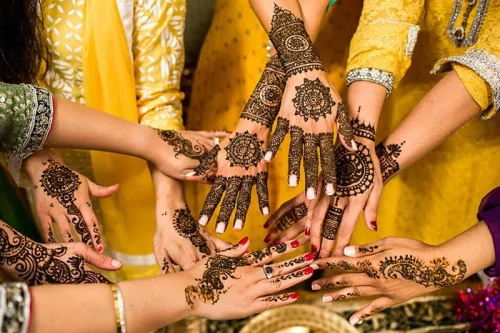
The Ganesh Sthapan, also known as Ganesh Maatli, marks the commencement of the wedding rituals. In this ceremony, both families hold a Ganesh Pooja at their respective homes a few days before the wedding. The couple and their families come together to pray for a joyful and prosperous married life.
Mehndi and Sangeet: Highlight the communal joy during the Mehndi ceremony, where intricate henna designs are applied to the bride’s hands and feet, and the Sangeet, which is filled with dancing and singing.
Pithi: This ceremony is the Gujarati version of the Haldi ceremony. The room glows with the bright, warm yellows of the Haldi paste, and the air is fragrant with sandalwood and rosewater. Seated on a Bajat at their respective homes, the bride and groom present their hands and feet, while relatives take turns applying the Haldi paste, adding to the festive atmosphere.
Mosalu and Mameru: Also referred to as Mosaalu, the Mameru ceremony occurs one or two days before the wedding day. During this ritual, the bride’s maternal uncle visits her and presents sweets and gifts, including a saree, jewellery, and other garments.
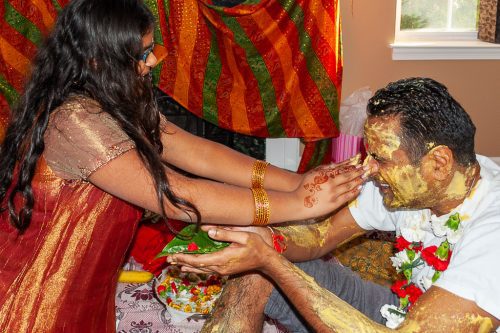
Wedding Day Rituals:
Varghodo: Varghodo is the Gujarati equivalent of the Baraat. In this vibrant procession, the groom rides a horse to the bride’s house, accompanied by his family and friends who dance joyfully along the way. The procession is further enlivened by a band of musicians playing lively instrumental music.
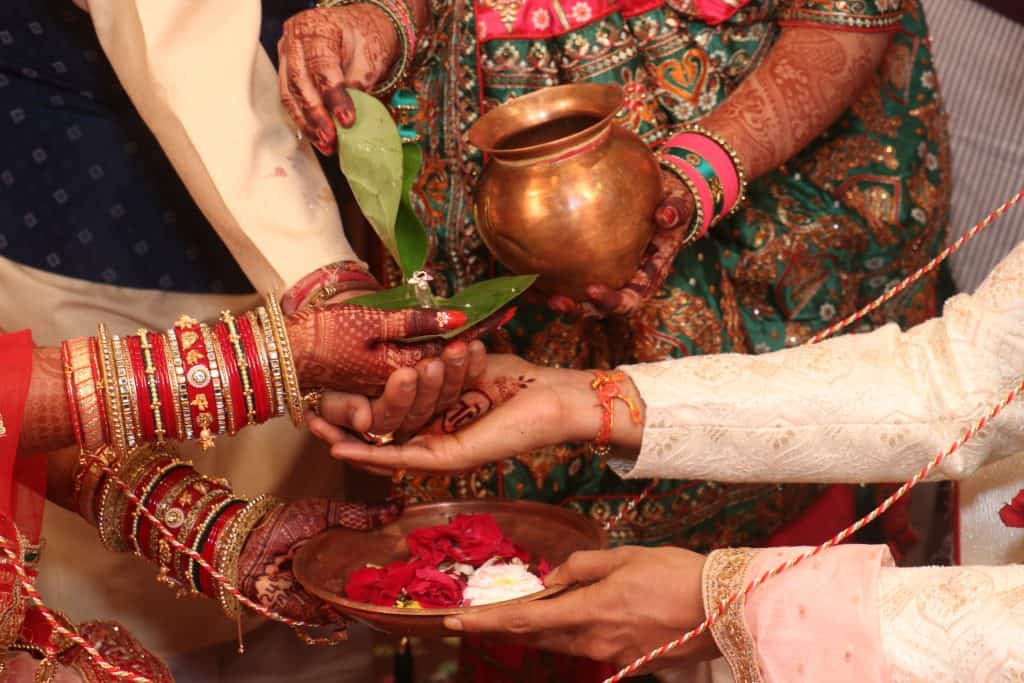
Jaimala: The bride and groom formally meet for the first time on their wedding day by exchanging floral garlands during the Jaimala ceremony. They swap the garlands twice while engaging in a playful game where their relatives lift them up, each trying to avoid being the first to be garlanded.
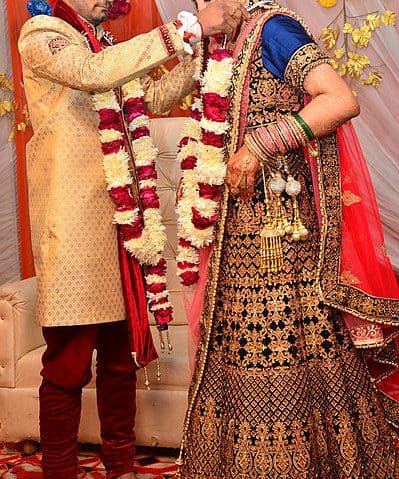
Kanyadaan and Hasta Milap: In this ritual, the bride’s father formally entrusts his daughter to the groom, asking for a promise that the groom will care for her as he has throughout her life.
Post-Wedding Rituals:
Vidaai: This ceremony marks the bride’s departure from her family home after the wedding. It’s an emotional moment, often filled with tears, as the bride and her family bid farewell.
Ghar Nu Laxmi: In this Gujarati post-wedding ceremony, the bride is welcomed into the groom’s home as Goddess Lakshmi, who is believed to bring prosperity and good fortune. At the entrance, the mother-in-law sets a vessel filled with rice, which the bride is asked to knock over with her right foot. This act symbolizes abundance and the bride’s acceptance of her new duties in her marital home.
Aeki Beki: Following the Ghar Nu Laxmi ceremony, the newlyweds play a game called Aeki Beki. In this game, a tray filled with water, milk, and sindoor (vermilion) is prepared, and coins along with a ring are added. The couple then tries to find the ring, and it is believed that whoever finds the ring four out of seven times will dominate household decisions. The day ends with prayers to God, seeking blessings for the newly married couple.
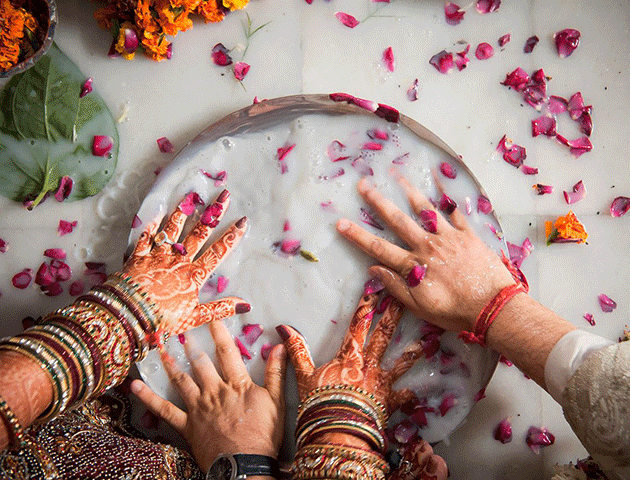
Food in Gujarati Weddings:
Gujarati weddings are known for their delectable cuisine, featuring a variety of both sweet and savoury dishes. These dishes not only offer a taste of Gujarati culinary richness but also reflect the joyous and generous spirit of Gujarati celebrations.
Here are some popular Gujarati dishes commonly served at weddings:
Dhokla – A steamed, spongy snack made from fermented rice and chickpea batter, often garnished with mustard seeds and coriander. It’s light yet flavorful, making it a favourite during wedding feasts.
This steamed delicacy is both nutritious and comforting. Typically served as a snack or breakfast item, dhokla is often drizzled with a tempering of oil and spices that add a vibrant kick to its subtle taste. Its appeal lies in its versatility and the ease with which it can be prepared, making it a staple in Gujarati households. Dhokla embodies the spirit of Gujarati culinary tradition, which favours vegetarian dishes that are as nourishing as they are delicious.
Undhiyu – A traditional winter dish, Undhiyu is a mixed vegetable casserole that includes ingredients like sweet potatoes, bananas, eggplants, and beans, slow-cooked with spices and fenugreek dumplings. It’s a must-have at Gujarati weddings.
This hearty, vegetable-based dish is a culinary representation of Gujarat’s agricultural bounty, combining seasonal roots and beans with delicate spices in a slow-cooked stew. Its name derives from the Gujarati word “undhu,” meaning upside down, as the dish was traditionally cooked upside down underground in earthen pots fired from above. At weddings, Undhiyu is more than just a meal; it’s part of the festivities, symbolizing community, abundance, and the bringing together of various flavours and textures in harmony. The dish’s complexity and festive nature make it a staple at Gujarati weddings, embodying the rich culinary heritage of the region.
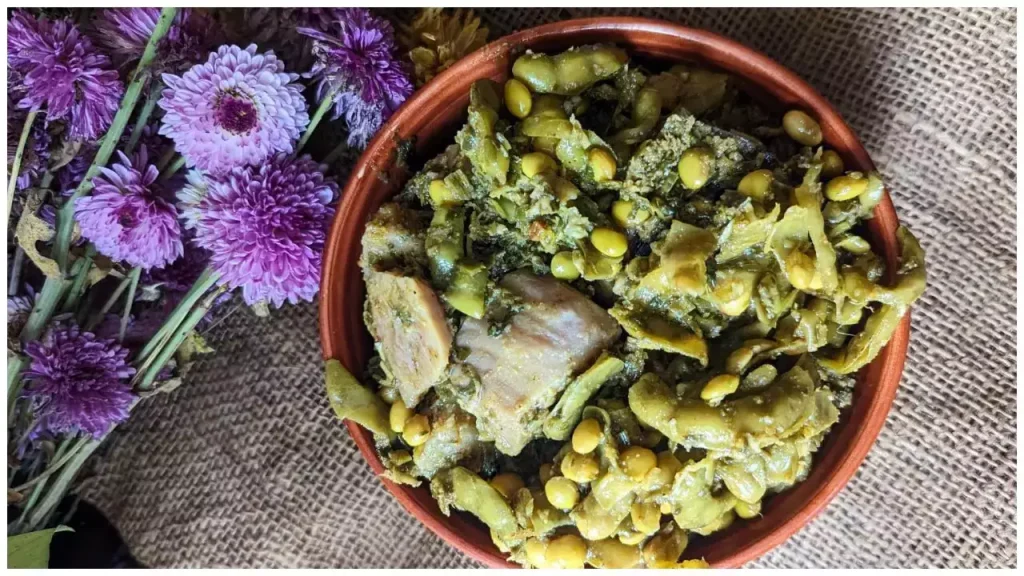
Khandvi – Another popular snack, Khandvi is made of thin layers of gram flour cooked with buttermilk. It’s delicious and visually appealing.
This delightful and delicate snack from the vibrant palette of Gujarati cuisine is renowned for its soft, melt-in-the-mouth texture and tantalizing flavours. This savoury roll is seasoned with turmeric and steamed to perfection before being rolled into tight spirals. It is then garnished with mustard seeds, fresh coriander, coconut, and sometimes, curry leaves, which add a burst of colour and an aromatic touch.
At Gujarati weddings, Khandvi holds a special place on the menu, often served during the reception or as a part of the main feast. Its lightness makes it a favoured choice among guests who wish to indulge in a variety of dishes without feeling overwhelmed. Khandvi’s presence at weddings is not just about taste; it’s a nod to Gujarati tradition and craftsmanship, celebrating the art of cooking that is passed down through generations.
Basundi – This sweet, dense milk-based dessert is flavoured with cardamom and nutmeg and garnished with chopped nuts. It’s especially popular at celebrations.
Basundi is particularly significant at Gujarati weddings, where it symbolizes sweetness and richness, qualities hoped for in the newlyweds’ future life together. Serving Basundi at weddings is a way to offer blessings and joy to guests, making it a staple dessert that complements the grandeur and festivity of the occasion. Its preparation involves slow-cooking milk until it reduces and thickens, symbolizing the patience and dedication that are also essential ingredients in a successful marriage.
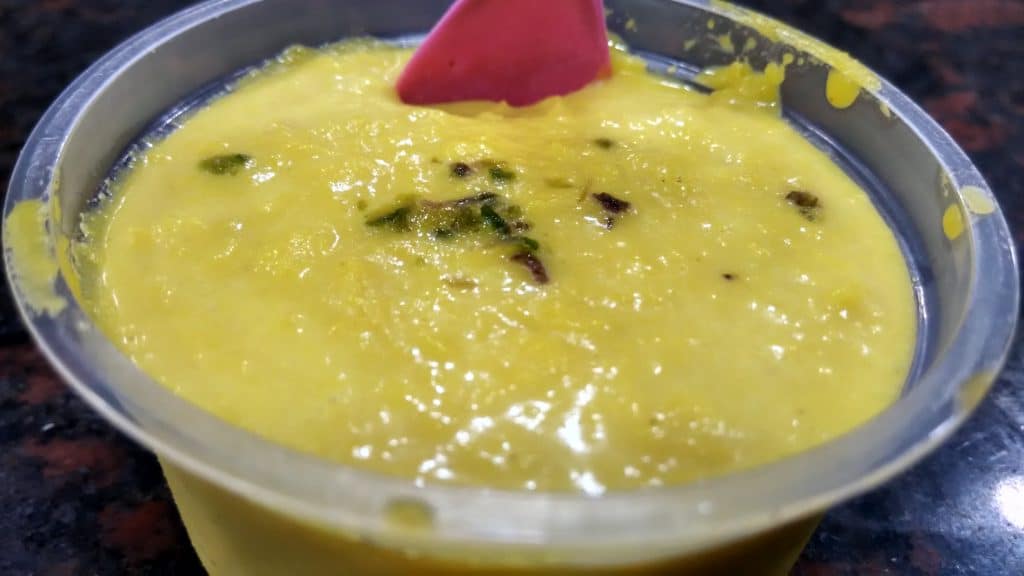
Biryani/Pulav – Although not originally Gujarati, Biryani or Pulav has been adapted into Gujarati cuisine with a sweeter twist, often including dried fruits, nuts, and a blend of spices, making it a festive dish loved at weddings.
These rice dishes are celebrated for their rich flavours and the ability to be served in large quantities, making them ideal for the grand feasts typical at Gujarati weddings. They provide a hearty, communal meal that complements the vibrant, festive atmosphere of Gujarati weddings, ensuring that every guest leaves satisfied.
These weddings are an exuberant display of love, commitment, and Gujarati heritage. As the rituals unfold, from the colourful pre-wedding ceremonies to the poignant moments of the wedding and the cheerful post-wedding games, each tradition is imbued with deep meaning and cultural significance.
Read more: Latest



